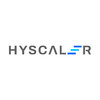Filter interviews by
Website Developers India Interview Questions and Answers
6 Interview questions
Functions return a value while stored procedures do not.
Functions are used to perform a specific task and return a value.
Stored procedures are used to execute a set of SQL statements and do not return a value.
Functions can be used in SQL statements while stored procedures cannot.
Functions can be called from within stored procedures.
Functions are deterministic while stored procedures may not be.
Functions can be use...
Yes, we can delete records from views. Views are virtual tables that display data from one or more tables.
Views are used to simplify complex queries by providing a virtual table with a specific subset of data.
Deleting records from a view will delete the corresponding records from the underlying table(s).
Views can also be used to restrict access to sensitive data by only allowing certain columns to be displayed.
Exa...
Temp table and magic table are used in SQL for temporary storage and tracking changes respectively.
Temp table is used to store intermediate results during a query execution.
Magic table is used to track changes made to a table during an INSERT, UPDATE or DELETE operation.
Temp table is created using CREATE TABLE statement with # or ## prefix.
Magic table is accessed using the special INSERTED and DELETED tables.
Temp ...
Indexing is a way to improve database performance by creating a separate data structure that allows faster data retrieval.
Clustered index: sorts and stores the data rows in the table based on their key values
Non-clustered index: creates a separate structure that includes the indexed columns and a pointer to the data row
Full-text index: enables full-text search on character-based data types
Filtered index: indexes a...
Constraints are limitations or rules that must be followed in software development.
Data constraints: limit the type or amount of data that can be entered
Domain constraints: limit the values that can be entered
Business rules: limit the actions that can be taken
Hardware constraints: limit the hardware that can be used
Time constraints: limit the time available for development or execution
Query optimization techniques aim to improve the performance of database queries.
Use indexes to speed up query execution
Avoid using SELECT * and instead specify only required columns
Use JOINs instead of subqueries
Avoid using functions in WHERE clauses
Use EXPLAIN to analyze query execution plan
Website Developers India Interview Experiences
1 interview found
I applied via Campus Placement and was interviewed before Mar 2021. There was 1 interview round.
(6 Questions)
- Q1. What is indexing? Different types of indexing in MS SQL
- Ans.
Indexing is a way to improve database performance by creating a separate data structure that allows faster data retrieval.
Clustered index: sorts and stores the data rows in the table based on their key values
Non-clustered index: creates a separate structure that includes the indexed columns and a pointer to the data row
Full-text index: enables full-text search on character-based data types
Filtered index: indexes a subs...
- Q2. Query optimization techniques
- Ans.
Query optimization techniques aim to improve the performance of database queries.
Use indexes to speed up query execution
Avoid using SELECT * and instead specify only required columns
Use JOINs instead of subqueries
Avoid using functions in WHERE clauses
Use EXPLAIN to analyze query execution plan
- Q3. Difference between function and stored procedure
- Ans.
Functions return a value while stored procedures do not.
Functions are used to perform a specific task and return a value.
Stored procedures are used to execute a set of SQL statements and do not return a value.
Functions can be used in SQL statements while stored procedures cannot.
Functions can be called from within stored procedures.
Functions are deterministic while stored procedures may not be.
Functions can be used in ...
- Q4. Use of temp table and magic table
- Ans.
Temp table and magic table are used in SQL for temporary storage and tracking changes respectively.
Temp table is used to store intermediate results during a query execution.
Magic table is used to track changes made to a table during an INSERT, UPDATE or DELETE operation.
Temp table is created using CREATE TABLE statement with # or ## prefix.
Magic table is accessed using the special INSERTED and DELETED tables.
Temp table...
- Q5. Can we delete records from views? What is the use view?
- Ans.
Yes, we can delete records from views. Views are virtual tables that display data from one or more tables.
Views are used to simplify complex queries by providing a virtual table with a specific subset of data.
Deleting records from a view will delete the corresponding records from the underlying table(s).
Views can also be used to restrict access to sensitive data by only allowing certain columns to be displayed.
Example:...
- Q6. Types of constraints
- Ans.
Constraints are limitations or rules that must be followed in software development.
Data constraints: limit the type or amount of data that can be entered
Domain constraints: limit the values that can be entered
Business rules: limit the actions that can be taken
Hardware constraints: limit the hardware that can be used
Time constraints: limit the time available for development or execution
Interview Preparation Tips
Before accepting offer try to negotiate salary as much as you can. Company provide very less increment and increment process is also slow.
Skills evaluated in this interview
Top trending discussions






Interview questions from similar companies

Software Engineer Interview Questions & Answers
BigStep Technologiesposted on 25 Aug 2021
Interview Questionnaire
1 Question
- Q1. Questions regards node js and java script concept, event loop, why node is single threaded, how event loop works in node js, database queries and previous work experience.
Interview Preparation Tips
Advice:
Answer question with confidence.
Feel comfortable with interviewer.

I applied via Referral and was interviewed in Mar 2021. There were 3 interview rounds.
Interview Questionnaire
1 Question
- Q1. Interviewer firstly ask me tell me about your self and then he ask question of basic php question like how to print in php and interviewer and he ask about if else statement switch case and for do while l...
Interview Preparation Tips

Software Engineer Interview Questions & Answers
Apmosys Technologiesposted on 15 Feb 2022
I applied via Referral and was interviewed before Feb 2021. There were 3 interview rounds.
(1 Question)
- Q1. Tell me about yourself
- Ans.
I'm a passionate software engineer with a strong background in full-stack development and a love for solving complex problems.
Graduated with a degree in Computer Science from XYZ University.
Worked at ABC Corp, where I developed a web application that improved user engagement by 30%.
Proficient in languages like JavaScript, Python, and Java, with experience in frameworks like React and Django.
Enjoy collaborating in agile...
(1 Question)
- Q1. 1 Project Explanation 2 SDLC & STLC. 3 Differentiate Smoke vs Sanity 4 What is Regression testing? 5 Bug life cycle. 6 Scenarios on real time example. 7 Questions on agile
- Ans.
Interview questions for Software Engineer position
Project explanation should include details on the project's purpose, scope, and technologies used
SDLC (Software Development Life Cycle) and STLC (Software Testing Life Cycle) are methodologies used in software development and testing respectively
Smoke testing is a type of testing that checks if the basic functionalities of the software are working fine, while Sanity tes...
(1 Question)
- Q1. All basic HR questions and salary discussion.

I applied via Referral and was interviewed before Nov 2020. There were 3 interview rounds.
Interview Questionnaire
2 Questions
- Q1. Related to work profile
- Q2. Related to interests
Interview Preparation Tips

Interview Questionnaire
1 Question
- Q1. SDLC Model
Interview Preparation Tips

I appeared for an interview before Jun 2016.
Interview Questionnaire
1 Question
- Q1. Java related questions on Oops concept and Multithreading
Interview Preparation Tips
Experience: Simple aptitude and reasoning questions little java based programming
Tips: Basic programming knowledge and good aptitude
Duration: 1 hour
Total Questions: 60
Round: Technical Interview
Experience: Normal questions on Java, basic programming questions like reverse no. , String related and logical coding
Tips: What u mentioned on your resume go through that only, they will not ask apart from your resume
Skills: How Well You Are Able To Communicate What You Wanted To Tell, Programming
College Name: SRCEM

I appeared for an interview before Aug 2016.
Interview Preparation Tips
Experience: I am vinothkumar from Dindugal, I was studied computer engineering in Madurai institute of engineering and technology at sivagangai, I am quality controller in RR DONNELLY at Chennai, my experience 2 years, my family staying in native, my father palanichami he is a former, my mother tamilselvi she is home maker and my one yelder brother Vijayakumar he is driver, I am interested area software engineer, my hobbies are listening music, reading book and news paper, playing and watching cricket
Tips: No comments
Round: Test
Experience: I am vinothkumar from Dindugal, I was studied computer engineering in Madurai institute of engineering and technology at sivagangai, I am quality controller in RR DONNELLY at Chennai, my experience 2 years, my family staying in native, my father palanichami he is a former, my mother tamilselvi she is home maker and my one yelder brother Vijayakumar he is driver, I am interested area software engineer, my hobbies are listening music, reading book and news paper, playing and watching cricket
Tips: No comments
Total Questions: 15
Round: Test
Experience: See my mentality
Tips: No comments
Duration: 45 minutes
Round: Group Discussion
Experience: Communication
Tips: No comments
Skills: Communication And Confidence

Software Engineer Interview Questions & Answers
Apmosys Technologiesposted on 13 Jan 2021
I applied via Referral and was interviewed before Jan 2020. There was 1 interview round.
Interview Questionnaire
2 Questions
- Q1. Which technology are you using, is this latest?
- Ans.
We are using a variety of technologies, including some of the latest ones.
We are using React for our front-end development.
We are also using Node.js for our back-end development.
We are using Docker for containerization.
We are using Kubernetes for orchestration.
We are using AWS for cloud hosting.
We are constantly evaluating new technologies to see if they can improve our development process.
- Q2. If not then which technology can we use instead of this?
- Ans.
It depends on the specific requirements and constraints of the project.
Consider the project's goals and objectives
Evaluate the available technologies and their capabilities
Assess the project's budget and timeline
Consult with stakeholders and experts in the field
Examples: React vs Angular, MySQL vs MongoDB, Java vs Python
Interview Preparation Tips
Listen carefully and speak fluently.

I applied via Company Website and was interviewed before Dec 2019. There were 3 interview rounds.
Interview Questionnaire
1 Question
- Q1. Regarding OOPS, wordpress and laravel.
Interview Preparation Tips
Website Developers India Interview FAQs
Tell us how to improve this page.
Interview Questions for Popular Designations
Interview Questions from Similar Companies
Website Developers India Reviews and Ratings
based on 21 reviews
Rating in categories
|
Software Developer
8
salaries
| ₹3 L/yr - ₹6.6 L/yr |
|
Business Analyst
6
salaries
| ₹2 L/yr - ₹4.8 L/yr |
|
Laravel Developer
6
salaries
| ₹2.4 L/yr - ₹3.6 L/yr |
|
PHP Developer
6
salaries
| ₹2.6 L/yr - ₹4.4 L/yr |
|
UI/UX Designer
5
salaries
| ₹2 L/yr - ₹3.2 L/yr |

HCL Infosystems

Zidio Development

Northcorp Software

Accel Frontline
- Home >
- Interviews >
- Website Developers India Interview Questions










